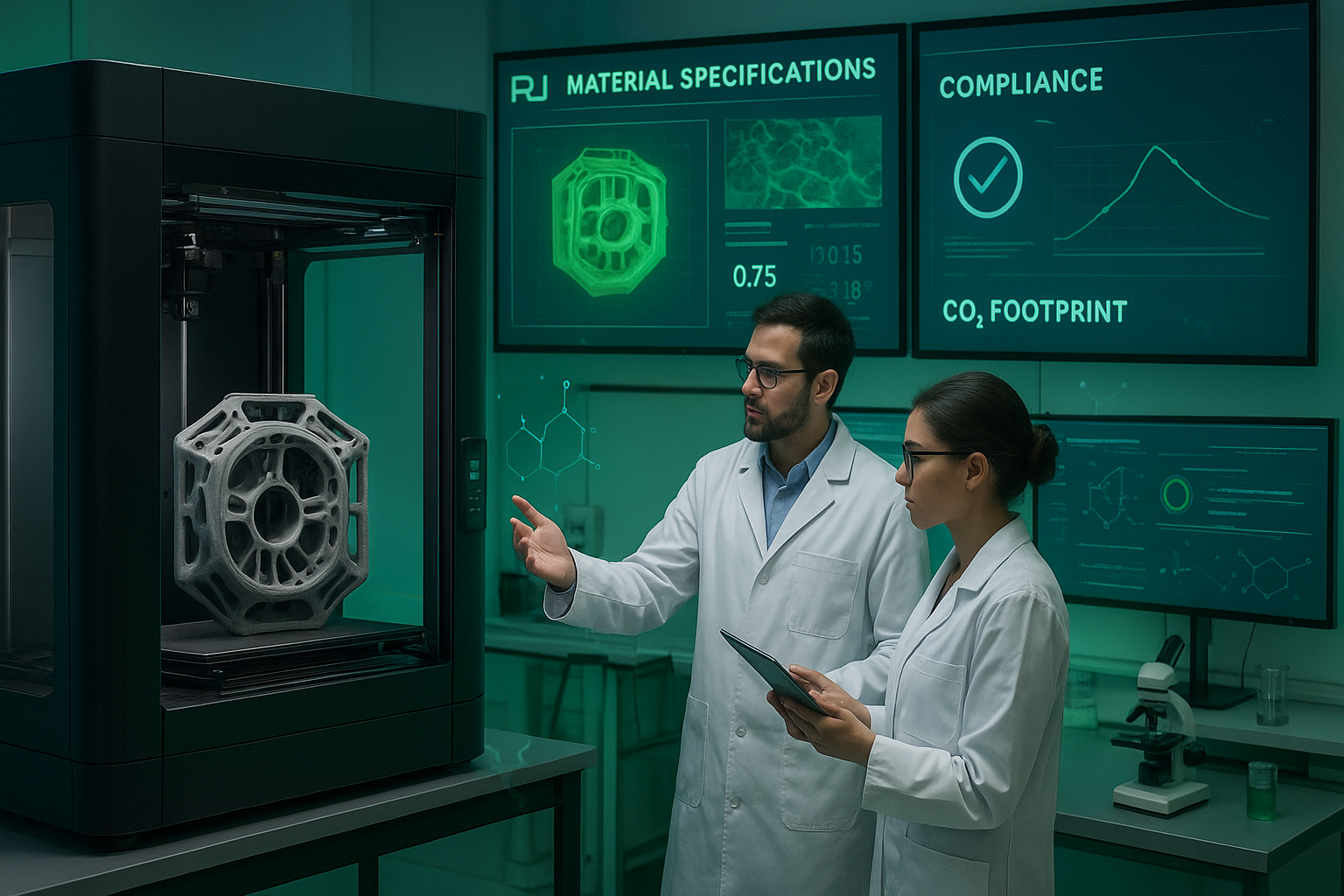3D Printing and PLM: Additive Manufacturing in Chemistry and PLM’s Role in Material and Process Management
Introduction: The New Frontier of Chemical Manufacturing
3D printing, also known as additive manufacturing (AM), has evolved far beyond its roots in prototyping. In the chemical industry, it’s now opening entirely new possibilities for creating complex structures, tailoring material properties at the molecular level, and enabling on-demand production of parts, devices, and even functional chemical components.
When integrated with Product Lifecycle Management (PLM) systems, 3D printing transforms from a standalone capability into a fully traceable, data-driven manufacturing method. By embedding additive manufacturing workflows into PLM, chemical companies can manage material specifications, process parameters, quality data, and compliance records from concept through production and beyond.
Chemcopilot has already explored how PLM centralizes innovation (“Beyond BOM: Exploring Essential PLM Modules for the Chemical Industry”) and how advanced tools integrate with manufacturing (“Requirements Management in PLM”). This article extends those discussions into the fast-growing field of 3D printing in chemistry.
1. Understanding 3D Printing in the Chemical Context
Most people associate 3D printing with plastics, metals, or ceramics. In chemical manufacturing, however, additive manufacturing takes on a more complex dimension: it can involve functional polymers, bio-based resins, composite materials, and even reactive feedstocks that transform during the printing process.
Examples include:
Catalyst structures with optimized surface areas for chemical reactions.
Custom reactor parts for microfluidics or lab-on-chip systems.
Porous membranes for filtration, separation, or controlled release.
Pharmaceutical dosage forms with patient-specific drug delivery profiles.
Recent studies in Additive Manufacturing journal highlight that material chemistry is becoming the bottleneck and the differentiator in AM for industrial applications. This is where PLM plays a decisive role—capturing the complete formulation and production history of each printable material.
2. Why PLM is Essential for 3D Printing in Chemistry
Additive manufacturing is fundamentally data-intensive. Unlike conventional processes, where material properties and dimensions are standardized, 3D printing requires fine-grained control over layer thickness, temperature profiles, curing times, and even environmental factors like humidity.
A PLM system supports this by:
Centralizing material specifications (including proprietary chemical compositions and their safety data).
Linking process parameters directly to CAD and print files.
Managing supplier and batch information for feedstocks.
Maintaining compliance records for REACH, EPA, and other chemical regulations.
In practice, PLM becomes the “digital memory” of both the product and the process—ensuring that a part printed today can be reproduced exactly years later with full regulatory traceability.
3. From R&D to Production: Closing the Data Loop
A major challenge in chemical 3D printing is the scale-up from R&D to manufacturing. Laboratory experiments often generate hundreds of micro-variants of a formulation before arriving at the optimal one. Without PLM, this information risks being scattered in lab notebooks, spreadsheets, or isolated CAD files.
When integrated with LIMS (Laboratory Information Management Systems) and MES (Manufacturing Execution Systems), PLM ensures:
Seamless handover of validated formulations from lab to production.
Automated version control of print files and process parameters.
Feedback loops where production data informs R&D for continuous improvement.
This mirrors concepts discussed in our “Digital Twins and PLM” article—where the digital record evolves with the product.
4. Material Lifecycle Management in AM
In chemical additive manufacturing, materials have lifecycles just like products:
Formulation and development (captured in R&D).
Qualification and testing (mechanical, thermal, and chemical properties).
Production and batch tracking (linking lot numbers to printed parts).
Post-processing and finishing (curing, coating, or chemical treatment).
End-of-life considerations (recyclability, biodegradability, hazardous disposal).
PLM tracks all these stages and connects them to specific applications. For instance, if a printed catalyst support shows degradation in the field, the PLM system can quickly trace it back to the material batch and process conditions, enabling root cause analysis.
5. Regulatory Compliance in Chemical 3D Printing
Regulatory requirements for chemical products—REACH in Europe, TSCA in the US, GHS globally—apply just as much to 3D-printed parts when they involve reactive or hazardous substances. The challenge is that compliance now needs to cover:
Raw feedstock materials and their chemical safety profiles.
Process emissions during printing and post-processing.
Finished product safety in its intended environment.
PLM enables compliance-by-design, as we discussed in “Agrochemical Regulatory Strategy in the US Market”. By embedding regulatory checks into the 3D printing workflow, companies avoid costly rework and ensure every design is production-ready from a compliance standpoint.
6. Sustainability and Circularity in AM with PLM
3D printing has the potential to reduce waste, enable on-demand production, and support localized manufacturing—all of which contribute to sustainability goals. But it also raises new questions about material recyclability and energy use.
PLM can integrate CO₂ footprint tracking—a capability we’ve detailed in “How AI Calculates CO₂ Footprints in Chemical Processes”—so that every printed part’s environmental impact is visible from the design stage.
For example:
A PLM system can compare the CO₂ footprint of printing a part locally vs. ordering a molded version from overseas.
It can track post-consumer waste streams for recyclable feedstocks.
7. AI as an Enabler of 3D Printing + PLM
While 3D printing already generates massive amounts of process data, AI adds a predictive and optimization layer. Integrated with PLM, AI can:
Suggest optimal print parameters based on historical performance.
Predict material performance under various chemical exposures.
Flag potential compliance risks before printing begins.
Chemcopilot’s AI modules are being developed to connect with additive manufacturing workflows—similar to our work in IoT-PLM integration—but this requires several months of engineering to achieve full real-time connectivity.
Conclusion: The Strategic Imperative for Integration
3D printing in the chemical industry is no longer an experimental novelty—it’s becoming a strategic manufacturing capability. But without PLM integration, its full potential can’t be realized. The chemical properties of feedstocks, the precision of process parameters, the demands of compliance, and the goals of sustainability all demand a centralized digital backbone.
The future belongs to chemical companies that combine additive manufacturing with PLM and AI to create not only better parts, but better-managed lifecycles.

